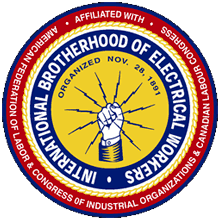July 13, 2015
By LaborPress
On July 9, 1966, 35,000 members of the International Association of Machinists (IAM) across the country working at five airlines went on strike. Sixty percent of the commercial airline industry was shut down for 43 days.
As the airlines invested in equipment and jet technology during the early 1960's, airline workers were not offered raises for several years. Despite the high level of skills needed by airline mechanics, their wage scales were significantly behind other industries. Airline profits were depressed with funds needed to bring the industry into the jet age.
Facing a bargaining impasse between the IAM and the five carriers (United, Northwest, National, Trans World and Eastern) covered in the industry's first multi-carrier labor contract, a Presidential Emergency Board presented a "compromise" package that the workers rejected.
While the airlines were running a deficit in 1964, by 1966 the new jet technology was paying off. In 1965, Eastern turned the previous year's $5.8 million loss into a $29.7 million profit. United almost doubled its 1964 profit of $27.3 million, and the industry as a whole recorded a half billion dollar surplus.
On July 8, almost a year after negotiations started, and more than six months after the old contract expired, IAM members began picketing 230 airports through the USA. More than 150,000 passengers were inconvenienced and mail was delayed. businesses were also affected. The Transport Workers Union said they would not work on any aircraft leased from the five struck carriers.
On its 22nd day, negotiations moved to the White House. President Johnson proposed a settlement calling for a 4.5 percent raise each for three years. But machinists rejected the settlement by a vote of 17,251 to 6,587.
Assistant Secretary of Labor Jim Reynolds finally reached an agreement that was ratified on August 19th. The vote was 17,721 to 8,235, 43 days after the strike began. The final settlement was six percent – more than the president's original 3.2 percent or 4.5 percent.



